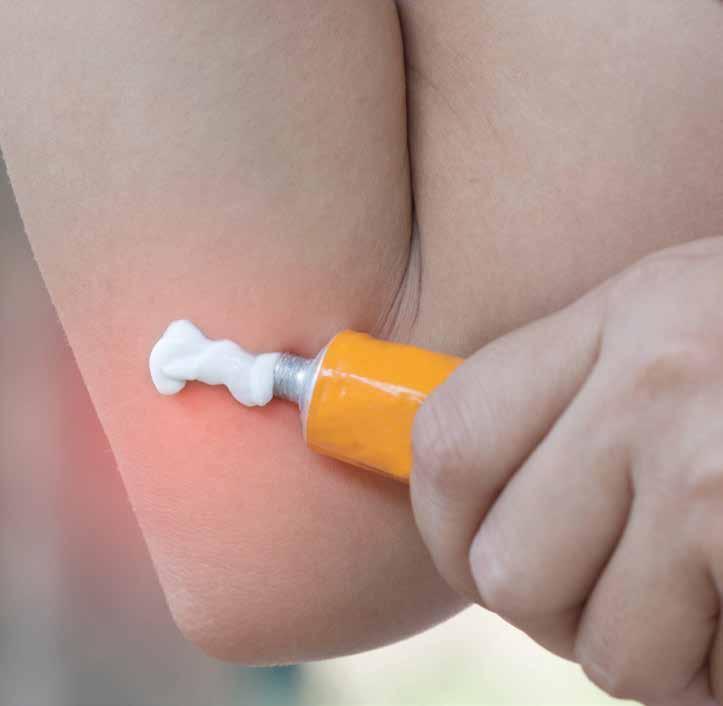SMOKING CESSATION
67
SMOKING CESSATION Many who have attempted to kick the smoking habit would probably agree that it is often easier said than done, and that it can be both overwhelming and challenging. The suggestion that giving up smoking will improve a smoker’s overall health, speed up the healing process and help prevent disease could help build their motivation to quit. With an appropriately trained pharmacy team pharmacies can offer services such as carbon monoxide testing and one-on-one advice on an ongoing basis, all year round. Pharmacies are ideally placed to advise people on how to stop smoking and to provide information on the supply of medication. Many will also be able to provide treatment for smokers who want to stop. The contribution pharmacists can make to improving the health of the population has been widely recognised. Pharmacists are in a pivotal position to help patients find the most effective methods to successfully quit smoking and choose from the many OTC smoking cessation products currently on the market.
OTC TREATMENTS Nicotine patches This treatment reduces or removes withdrawals associated with giving up smoking. Patches suit the moderately addicted smoker. They can be used for 16 hour or 24 hour periods. There is no difference in the effectiveness of 16 hour and 24 hour patches. They work by giving a steady dose of nicotine into the blood through the skin. The 24 hour patch keeps the nicotine levels constant and is for people who smoke as soon as they wake up and people who smoke during the night. Customers should be advised to put the patch on a different part of the body each day so it won’t irritate the skin. Some people may have high skin sensitivity or react badly to the adhesive or latex in the patches. If this happens, advise a switch to a different form of NRT. Nicotine gum Nicotine gum relieves withdrawal symptoms and gives ‘something to do with the mouth’ in place of smoking. This can help change a habit of smoking. The gum is available in various strengths depending on how the level of addiction to nicotine. Nicotine inhaler The inhaler (sometimes called an inhalator) is made up of a mouth piece and cartridges which contain nicotine. When it’s inhaled, the nicotine and menthol vapour is sucked into the body. This is absorbed into the blood through the lining of the mouth and throat.
Nicotine lozenges
“Follow ‘The 5 Rs’:
The lozenge comes in various strengths depending on the level of addiction. Some people prefer the taste of lozenges over other oral forms of NRT. Lozenges may irritate the mouth and stomach and cause hiccups as the nicotine is swallowed.
• Relevance: patients should be encouraged to think about the reasons why quitting is important
DRUG INTERACTIONS
• Rewards: patients should be asked to identify any potential benefits they anticipate from cessation
Because tobacco smoke interacts with various pharmacologic agents through pharmacokinetic or pharmacodynamic mechanisms that may result in decreased therapeutic efficacy or, less commonly, increased toxicity, pharmacists are key in identifying possible drug interactions and contraindications associated with tobacco use. Examples of drug interactions with tobacco smoke include hormonal contraceptives, betablockers, theophylline, and benzodiazepines.
ASSIST AND ADVISE Pharmacy staff are at the front line to encourage customers to take a look at the reasons why they smoke and consider giving up. Combining behavioural advice with pharmacotherapy for smokers who visit the pharmacy with an ailment or long standing condition could increase their chances of stopping. There are a number of tips and techniques that can assist pharmacists in their quest to help smokers kick the habit. Advise a quit date. Deciding upon a specific date allows for adequate preparation including coming to terms with it mentally, which can have a huge impact on the outcome.
W W H A M
• Risks: patients should be asked to identify the negative health consequences of smoking
• Roadblocks: help the patient identify barriers to quitting and assist in overcoming these. E.g. stressful periods, trigger factors such as always having one with a cup of tea, boredom, negative side effects of quitting • Repetition: repeat the message when possible Always acknowledge and congratulate a patient’s efforts, this can promote a positive mental attitude. Remind patients that slip-ups are normal and that they shouldn’t punish themselves. Promoting patients to take their cessation journey one day at a time, often allows for more reasonable goals. In addition, for cravings, promoting “The 4 Ds” is a good way to overcome them: • Distract • Delay (until the urge passes- usually within 3-5 minutes) • Deep breathe (about 20 times) • Drink (patients find water extremely beneficial)
Who? Any adults who smoke. What? N/A How long have they had the symptoms? The length of time they have smoked and the volume is essential to determining what NRT to recommend. Action already taken? Sufferers may already be trying to cut down or stop smoking all together. Medication: No more than 15 of the higher strength NRT lozenges should be used per day. Inhalators should be used in caution with patients with COPD or chronic throat disease.






















